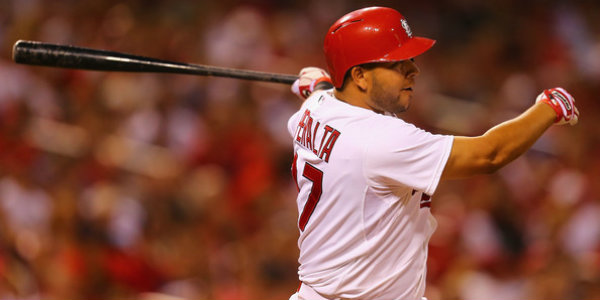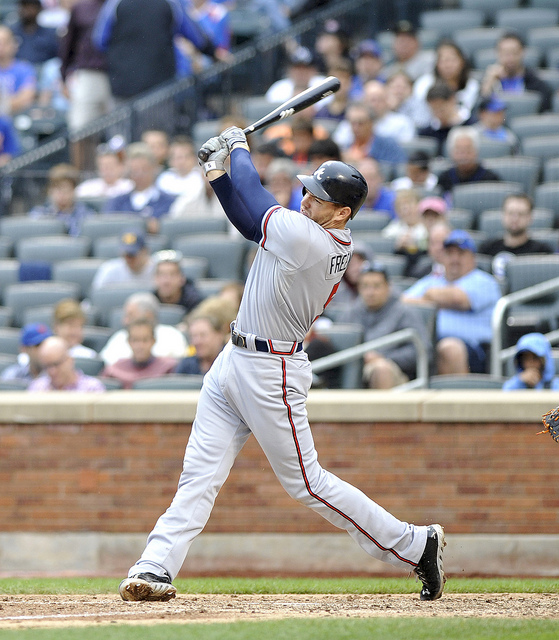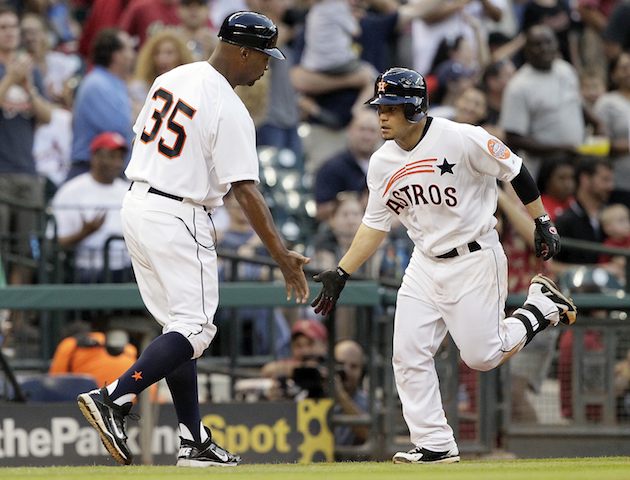2014 Fantasy Baseball: Breakout Player of the Year– Shortstops


As the calendar flips to September we notice two things in fantasy baseball. First, most full season fantasy leagues are moving into the playoff portion of their seasons. By definition, this will eliminate most teams. So, in parlance, most fantasy owners are ready to go fishing. This brings us to the second thing we notice this time of year. Most fantasy players have moved onto fantasy football. Luckily for you, I haven’t played fantasy football in years. I simply focus on the great game that is baseball.
That being said, it is high time we continue the process of looking at which players have successfully broken out at each position. Today, we focus on shortstops. Again, this isn’t about who the best shortstop in the game. Coming into the season, Troy Tulowitzki went either first or second among shortstops, so it is not a surprise to see him on the top of the list. We are looking for the guys that were overlooked on draft day.
The primary statistic we are using to rank these guys is runs created. Nearly every site uses it even if they call it something different. Baseball-reference.com calls it runs created (RC). Fangraphs calls it wRC, but it is essentially the same thing. It is an advanced statistic that estimates the number of runs a player actually creates for his team based on everything he does offensively. If a player creates 100 runs in a season, then he has had a very good season. With a month left, you will see that none of the shortstops have a chance to get there.
The rest of the numbers are familiar to you. Runs produced is a number I’ve used before in some of my other articles. It is simply the combination of runs and RBI minus home runs. We will look at the top 20 percent of shortstops (top six) and from there determine which of the shortstops is the breakout player of the year at the position.
|
PRE |
AVG |
HR |
Runs |
RBI |
RP |
RC |
SB |
|
|
Troy Tulowitzki |
17 |
.340 |
21 |
71 |
52 |
102 |
79 |
1 |
|
45 |
.286 |
8 |
76 |
41 |
109 |
71 |
23 |
|
|
203 |
.268 |
18 |
50 |
60 |
92 |
71 |
2 |
|
|
128 |
.287 |
13 |
54 |
64 |
105 |
70 |
4 |
|
|
40 |
.253 |
22 |
58 |
81 |
117 |
66 |
17 |
|
|
191 |
.283 |
13 |
68 |
63 |
118 |
65 |
19 |
As you can see, none of these guys truly came out of nowhere. However, some were underappreciated coming into the draft, and you can imagine that the players that picked some of these guys up the quickest were the ones that experienced the most success. That may have been either via the draft or a trade early in the season. Unlike other positions, these guys didn’t last until the waiver wire.
Breakout Player of the Year: Jhonny Peralta– St. Louis Cardinals
Two things happened to make Peralta a breakout player this year. First, he was clipped for PEDs towards the end of the 2013 season. His numbers were arguably better last season, but most fantasy players assumed he would go into the toilet once he was off the juice. He lasted until the 18th round on average in most fantasy drafts. So, the third best shortstop in baseball (according to runs created) was picked as a backup by most players.
Secondly, he got off to a slow start this season. That tended to justify the opinions of most fantasy players, so he was frequently dropped early on. Something happened in between then and now. Peralta slowly began to heat up and his numbers have crept up on just about everyone. If you had told most people that he was going to hit 20 or more home runs and drive in close to 80 RBIs they would have said you were nuts. Maybe John Mozeliak wasn’t as nuts as we think.
Runner Up: Starlin Castro– Chicago Cubs
With the development of several shortstop prospects (and the addition of Addison Russell), it was assumed that Castro would move on his merry way. He may end up moving out of shortstop, but his bat will remain in the lineup somewhere. After a down season in 2013, Castro has come back with a vengeance. No, he is not an elite offensive player, but he has hit with more power this season and the average has returned to normal levels.
The trouble with Castro moving forward is that he doesn’t get on base often enough and he doesn’t have any speed left on the base-paths. That limits his effectiveness as an offensive player. His bat plays up as a shortstop, but if he gets moved to second base or the outfield it might not be as valuable. As long as he is eligible at short he is an effective offensive player.
Honorable Mention: Alexei Ramirez– Chicago White Sox
At some point, someone might start a “free Alexei Ramirez” campaign. He seems to be the perfect trade candidate for the rebuilding White Sox, but they have inexplicably held onto him. The problem for him here is that Jose Abreu is the only productive bat left in Chicago. Yet, Ramirez still leads all shortstops in runs produced. Usually 150 runs produced is a very good number and he has an opportunity to eclipse that total before the end of the season.
Performance wise, Ramirez may not do any better anywhere else, but in terms of notoriety he could do better just about anywhere else. He was taken at the end of the 16th round on average. That means he would either be one of the last starting shortstops taken or one of the first backups depending on the particular draft. This despite a guy that will steal more than 20 bases, hit 15 or more home runs, and score more than 80 runs.



